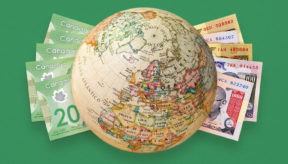What should you expect from school in Canada? This overview aims to help prepare you and your child for the Canadian education system.
Bringing a child with you into a new country can be difficult. There may be a larger adjustment period for them, especially if they don’t already speak the common language. However, all children living in Canada are entitled to free school education prior to post-secondary. This includes elementary and secondary schools. Make the process easier by preparing your child for school in Canada. Consider the following:
What is the Canadian School System Like?
When children are approximately 4 to 5 years-old, they begin elementary school where they start their academic journey in Kindergarten. Elementary school continues from Grade 1 until Grade 8. When students graduate Grade 8, they move on to secondary school, which is also known as high school. Secondary school is available from grades 9-12. However, it is important to note that post-secondary education (i.e. college and university) is not free in Canada, so you and your child will have to consider the cost of continuing their education after secondary school.
The Registration Process
If you wish to register your child in a Canadian elementary or secondary school, then you are required to provide the school with proof of your current address and your child’s age. Some schools may take this a step further by testing your child’s ability in math and English language skills to determine whether or not they may benefit from extra support.
Private Schools vs. Public Schools
When you are looking into elementary and secondary school education for your child, there is a choice between private schools and public schools.
Private schools can offer smaller class sizes, which provides teachers with a better opportunity for one-on-one learning time with students. However, if you choose to send your child to a private school, you are required to pay the mandatory tuition cost.
Public schools include non-religious schools as well as Catholic schools and Christian schools. This option is funded by the government, so you are not required to pay for your child’s education from Kindergarten to Grade 12.
About the Canadian School System
Firstly, the academic year begins in September and ends in June. However, if you arrive in Canada during the school year, your child will still be welcome. School days are Monday to Friday, except on holidays, and times vary depending on the school’s setup.
Secondly, your child will focus on core subjects in elementary school learning. This includes mathematics, reading, writing, physical education, social studies, health, science, and arts. Students continue learning these core subjects in secondary school, but they can explore special interests and additional subjects as they prepare for a specific career.
Thirdly, team sports and art clubs are available to participate in after school or during lunch time. This is a good place for students to hone their skill sets and develop friendships with other like-minded students.
How to Evaluate Your Child’s Learning Habits
Teachers send out report cards for parents twice a year, so parents can evaluate their child’s progress. This will showcase a child’s grades for every subject to inform parents if there is a troublesome subject area, or if their child is flourishing in an educational environment.
Additionally, it is expected that parents will assist their children’s education by helping them with school work and communicating any weak points to teachers. This can help their teacher to better assist a child’s understanding on a subject.
Summary
If you dedicate time towards preparing your child for school in Canada, such as explaining the routine and expectations of a new school, they may more easily adjust to this lifestyle change. Contact your local school for more details.
*Opinions expressed are those of the author, and not necessarily those of Student Life Network or their partners.




